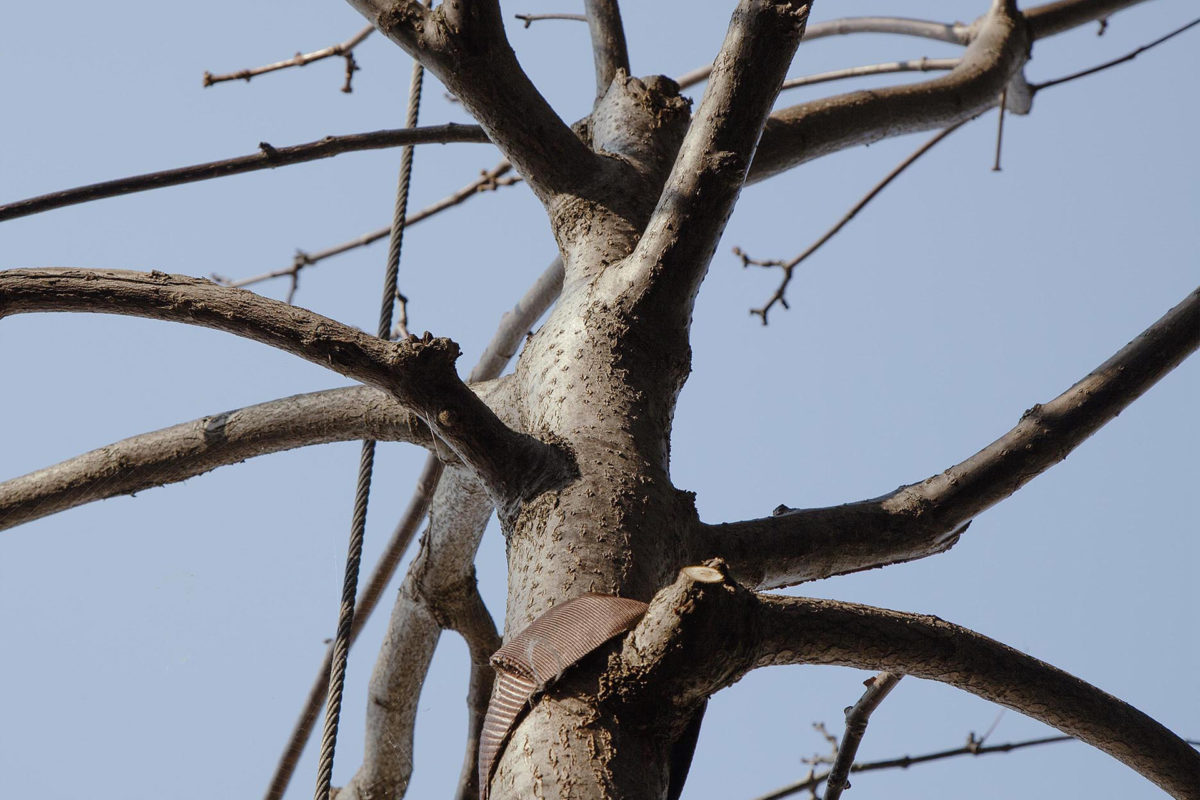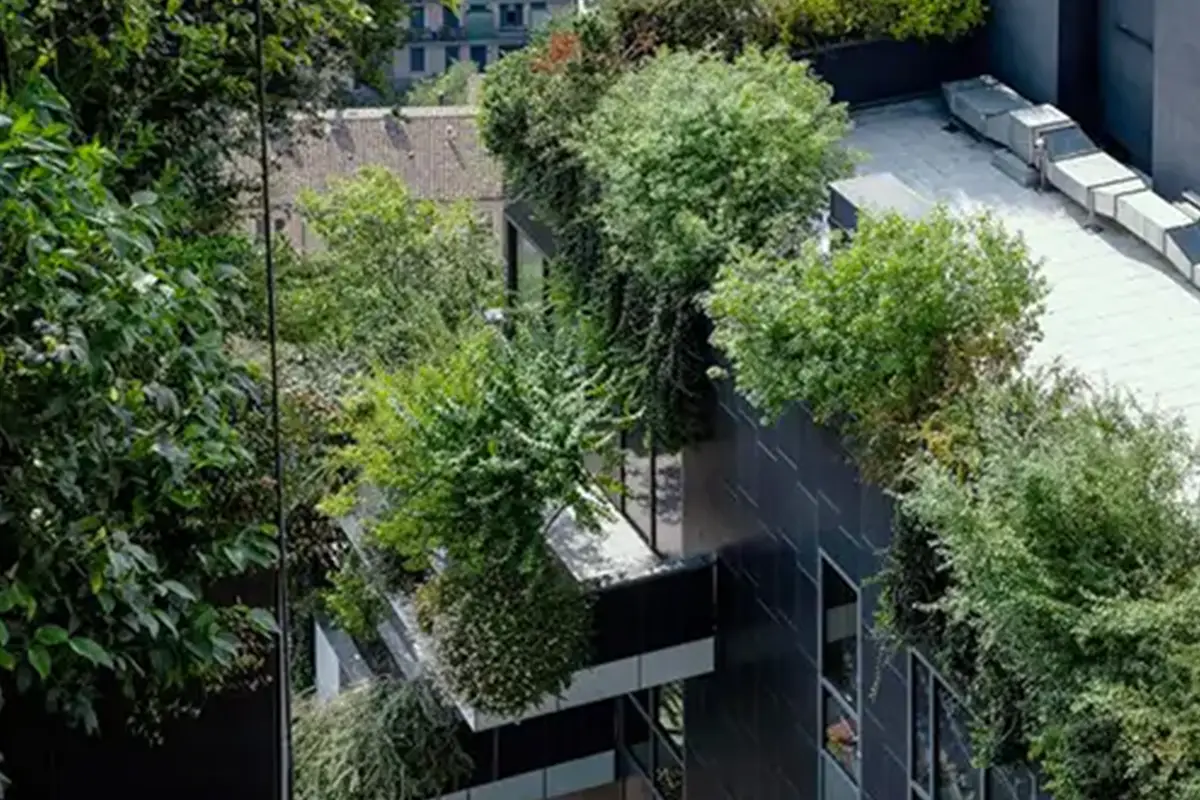«When planning an area, you have to consider the diversity of people’s needs» In conversation with Inside Outside founder and designer, Petra Blaisse
Biblioteca degli Alberi
«We developed this as a connective park», Blaisse states. «It was intended not only to connect physically, but mentally through a diverse fusion of areas, creating a space where people can meet and be». Designed as an ‘interface’, the hundred thousand square metres of land fuses a variety of plants, trees and species in a layout that reflects the eclecticism of the surrounding inhabitants.
The infrastructure unites the needs of each individual in one communal space. Blaisse contemplates: «The past decade has shown a focus on efficiency, safety, security, and control. To work with sustainable means, you have to create something that will enhance and improve the environment, but also remain harmonious to the local ecosystem». In this, she outlines the necessity for integrational planning when it comes to developing land, with balanced consideration for both the natural environment and the profitability of commercial estate.
As her work in Italy shows, Blaise understands the changing needs of an adaptive world and its dependency on the natural environment. Similarly, she also acknowledges prior resistance from financial project backers, describing how «people have said again and again, how urgent action on climate and the environment is, but because it takes more time and money, most aren’t interested. A positive take away from recent events would be that the co-occurring worldwide lockdowns have given time for consideration. Hopefully, regulations might change in tandem».
How the development of the natural environment is a matter
Intellectual design is a matter of assessing the needs of the recipient before they know they need it. While biophilia remains constant to the human psyche, Blaisse emphasizes how development of the natural environment is a matter of «considering 100 years down the line. Who is going to take responsibility? What are the budgets? What could be needed?» – she underlines how «a park looks hopeful and Corona-proof, but that it is a machine. It is composed of complex layers. You have to consider the soil build up, the drainage, water conservation and so forth. You need to be mindful that you are making a base for the future».
This need for forward planning echoes the United Nations Sustainable Development Goals, which lists seventeen progressive 2030 deadlined targets, aiming to achieve a better and more sustainable future. Similarly, in 2018 the UK government issued a 25-year environment plan, which is intended to set a ‘comprehensive and long-term approach to protecting and enhancing natural landscapes and habitats in England for the next generation’. These institutionally entrenched environmental aims are imperative in changing the world. With this in mind, Blaise reiterates how «a park starts at point zero and forms through evaluation, but you are constantly thinking about the future, remaining conscious of the wider environment».
The need to fight against urban expansion into the natural environment
Blaisse emphasizes how we should «fight against urban expansion into the natural environment, as there is enough space for development in other ways». When projects are dictated by the cost to the developer, and during a housing crisis which puts strain on resources, the threat to green spaces is considerable. «The importance of green space is growing», Blaisse explains. «Not only with municipalities, but also with the investors and developers, because it increases the value of the surrounding area. It is commercially interesting to have green space surrounding a new development».
The UK Office for National Statistics reports that the value associated with living near a green space is estimated to be just over £130 billion in the UK. She continues to reassure how both natural and urban areas should coexist with neither depreciating the other. «All projects grow to create environments, but they have to have a base, the natural environment. It takes time to convince all the developing parties and investors». In densely populated areas like city centres, residents are motivated to utilize green spaces as a home from home in place of the traditional residential garden. Blaisse describes the work of Inside Outside to tackle the contradictions of the natural and urban landscape, in order to formulate a symbiosis between areas.
Referencing her work in Milan, Blaisse discusses the desire for «fluidity in order to continue the landscape. The park was not designed as a closed entity, but open and integrated 24/7». This exemplifies the need for easily accessible green spaces, and the importance such areas play in regards to mental health and well-being. In 2016, Stephen Morton reported for Public Health England ‘that good quality natural landscapes in urban areas can affect how people feel, reducing stress and sadness’. Using Dahlgren and Whitehead’s 1991 ‘determinants of health’, the Landscape Institute similarly reported how ‘healthy places are restorative and healing for both physical and mental health conditions, reducing stress and isolation’.
Petra Blaisse and the urge of a prioritization of green spaces
Not everyone has access to green space however, with US organization The Trust For Public Land estimating that 100 million people do not have a neighborhood park within a 10-minute walk from their home. Similarly, in the UK more than 2.5 million people live further than a 10-minute walk distance from a park. As published in the UK government’s ‘Improving access to greenspace: 2020 review’ it is acknowledged that ‘economically deprived areas have less available good quality public greenspace’.
As disparity between social classes only widens in wake of the post-COVID recession, it is worth considering how green spaces will be prioritized. Blaisse notes that she is rarely «ever commissioned for a project in a deprived area. The nature of our work is expensive, and the reality is that projects are dictated by money. When you plan an area, you have to create a middle ground from the diversity of people’s needs. We would hope this kind of crisis makes us realize that green spaces are essential for all generations, and should be prioritized as so».
Having talked of an interest in eternal space, Blaisse explains the importance of escapism within design. «We escape through reading, through language, through fantasy. Humans want to escape literally and mentally, so when you visit a green space you want to be there, but you also want detachment from the everyday». This highlights how parks can impact the mindset of the user. In the UK alone, the independent charity Fields in Trust estimates thewellbeing value associated with the frequent use of local parks and green spaces to be worth £34.2 billion per year to the entire UK adult population.
Treating the garden like a continuation of rooms
In terms of design, Blaisse tells how «you build the tools for the inhabitants that are essential for their happiness». Discussing her work on the State Detention Centre in Neiuwegein, she talks of creating the illusion of depth and perspective, treating the garden like a continuation of rooms. «You can escape by opening up walls and boundaries with windows, holes, and slits. The prison garden utilized the design of continual space in order to exacerbate the mental association of boundaries. The paths run off through the garden wall into the public space, creating a physical escape through design». She also explains how this was intended as a visual stimulus, «acting as a garden in your mind for those looking through their cell bars at the garden to find escape».
As Blaisse explains the work of Inside Outside, she tells how there is potential in adaptive environments. Similarly, to the multifaceted ‘land of illusions’ created at the Milan urban park in 2003, Covid-19 has forced us to rethink our environments and the interaction we have with them, expanding our needs from space. «If we live in an isolated way, we have an environment in which we feel balanced», Blaisse notes, emphasizing how as the needs of the user have been expanded, that the environment should be adapted to accommodate. «In an age of isolation, we need escapism».
Petra Blaisse
Petra Blaisse is a British-born Dutch designer. Her work is an intersection of the professions of architecture, interior architecture, landscape architecture, textile design, and exhibition design.




















